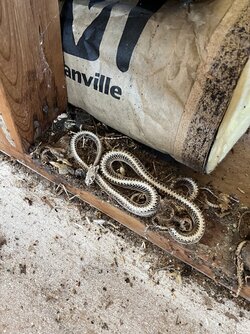Hello all, I've been a lurker but would appreciate some advice from any who would give it.
I'm in the process of renovating an off grid cabin. its stick built with T-111 siding, no insulation, ceiling or paneling, and is 20' x 30' open floor plan. It sits several feet off the ground on cement piers and I'm pulling out the windows in the photos and installing tall windows to catch the breeze (as most of the year heat and humidity are bigger factors).
However for the winter months, I am looking for a wood-fire heating solution and trying to decide between framing out a mantel with cement board finish and doing a fireplace insert, or just putting in a wood stove (thinking about something like the Woodstock Soapstone Survival Hybrid, which i think is 27,000 btus/hr, but also see people talking about the Jotul 602 and other smallish stoves, and really dont know how much stove I need). I do have a propane heater that runs off bbq cans that worked great when the cabin had insulation and ceiling, etc., but not sure how well it will work with the open floorplan, uninsulated open-rafter situation, and really I want to have the pleasure of the sight and sound of wood fire.
This is a recreational property and is only used a few days a month, but I do have small kids and need to be able to keep it reasonably warm in the winter, especially at night. Thus fuel efficiency and cost is not as important to me as effectiveness and really safety. II imagine I could just add a second propane heater and call it a day - but would prefer to find a safe way to get a wood fire in this kind of structure that would effectively heat it during in temps in the 30-40 degree low range (maybe a little frost here and there)?
Some pics are attached - thanks in advance to anyone who has some good advice for what to do in southern, humid places that get some cold now and then. I really want to enjoy it without worrying about burning it down.
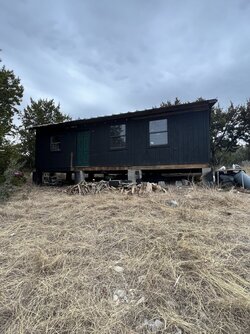
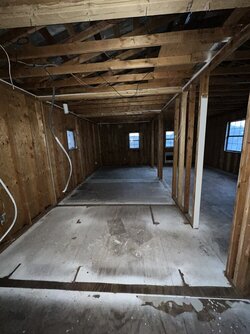
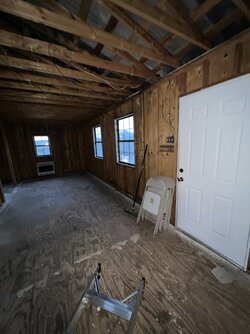
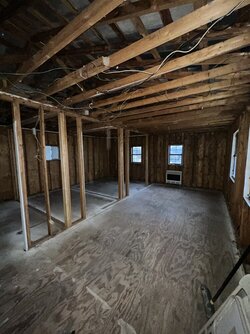
I'm in the process of renovating an off grid cabin. its stick built with T-111 siding, no insulation, ceiling or paneling, and is 20' x 30' open floor plan. It sits several feet off the ground on cement piers and I'm pulling out the windows in the photos and installing tall windows to catch the breeze (as most of the year heat and humidity are bigger factors).
However for the winter months, I am looking for a wood-fire heating solution and trying to decide between framing out a mantel with cement board finish and doing a fireplace insert, or just putting in a wood stove (thinking about something like the Woodstock Soapstone Survival Hybrid, which i think is 27,000 btus/hr, but also see people talking about the Jotul 602 and other smallish stoves, and really dont know how much stove I need). I do have a propane heater that runs off bbq cans that worked great when the cabin had insulation and ceiling, etc., but not sure how well it will work with the open floorplan, uninsulated open-rafter situation, and really I want to have the pleasure of the sight and sound of wood fire.
This is a recreational property and is only used a few days a month, but I do have small kids and need to be able to keep it reasonably warm in the winter, especially at night. Thus fuel efficiency and cost is not as important to me as effectiveness and really safety. II imagine I could just add a second propane heater and call it a day - but would prefer to find a safe way to get a wood fire in this kind of structure that would effectively heat it during in temps in the 30-40 degree low range (maybe a little frost here and there)?
Some pics are attached - thanks in advance to anyone who has some good advice for what to do in southern, humid places that get some cold now and then. I really want to enjoy it without worrying about burning it down.






